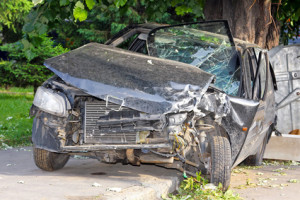In 2007, motor vehicle accidents were responsible for more than 1,300 fatalities and 194,255 injuries in New York State.
A car accident can ruin your life. It can result in disabling injuries, doctors’ visits, hospital stays, operative procedures and surgeries, rehabilitation therapy, lost income, lost pension benefits, physical pain and mental suffering, and the very real prospect of permanent disabilities. To make matters worse, you have to battle with insurance companies that often wrongfully deny claims and payment.
If you’ve been injured or lost a loved one in a New York car accident, we extend our sympathies and condolences. We realize no amount of money can ever replace your loss. But we can help NY families recover money for the injuries and damages suffered by them.
“Most people believe that if another driver causes an accident, the other driver’s insurance company will automatically pay for their damages. Unfortunately, that is not reality.”
You have a limited amount of time to take legal action, so it is important to obtain legal help immediately. Timely action also helps preserve valuable evidence and maximizes any potential recovery.
The New York car accident lawyers of Schwartzapfel Lawyers, P.C. can help. Call us today at (866) 292-2099 or fill out our online contact form for a free case evaluation.
The attorneys at Schwartzapfel Lawyers, P.C. have successfully represented thousands of families whose lives have been upended by car accidents. We’ve seen that one of the key sources of frustration is dealing with the insurance companies. Most drivers believe that if another driver causes an accident, the other driver’s insurance company will automatically pay for their damages. Unfortunately, that is not reality.
In New York State, every vehicle is required to have a minimal amount of Personal Injury Protection coverage. This coverage ensures that most individuals injured in a motor vehicle accident can receive certain benefits regardless of fault. But insurance laws and regulations, particularly those involving New York State No-Fault benefits, can be challenging to understand and reimbursements of expenses can be difficult to obtain. For example, many drivers don’t know that a claim for No-Fault benefits must be filed within 30 days of the accident or your medical bills and lost earnings may not be paid.
No-Fault benefits do not provide any money for pain and suffering.
Under New York State Insurance Law § 5102(d), car accident victims or their families can recover money for these personal injuries only in cases involving:
- Death;
- Dismemberment—loss of limb(s);
- Significant disfigurement or scarring—The injury must be significant enough to cause a reasonable person to view the result as “unattractive, objectionable or as the subject of pity or scorn;
- Fracture of a bone or a part of a bone—a broken nose or teeth qualify;
- Loss of a fetus;
- Significant limitation of use of a body function or system;
- Permanent consequential limitation of use of a body organ or member—The use of the organ or member causes persistent or chronic pain that has a limiting effect;
- Permanent loss of use of a body organ, member, function or system—The injury must cause the organ, member, function or system to no longer operate. The law requires the loss to be total;
- The “90/180 Day Rule”—Defined as an impairment of a non-permanent nature that prevents the victim from conducting daily activities for at least 90 days during the 180 days immediately following the accident.
The attorneys at Schwartzapfel Lawyers, P.C. have a proven track record of success helping thousands of families recover the money and benefits they are entitled to. If you have lost a loved one in a car accident, we extend our deepest sympathies and condolences. We can help you during this most difficult time. Allow us to protect your rights and help you recover for:
- The loss of financial support;
- The loss of parental guidance;
- Pain and suffering endured by the deceased prior to death;
- The loss of household help.
When you are in a New York, NY car accident, you may be unaware of what steps to take. Here’s what you should do:
- First, obtain medical assistance for yourself and others involved by calling 911.
- If you are able, exchange contact information with other drivers while waiting for police or medical care. Get the other driver’s license and plate number. Get the other driver’s insurance company and policy numbers.
- Obtain the names and contact information of any witnesses.
- If this isn’t possible, try and obtain contact information from the police officers who arrive on the scene so that you can later obtain a copy of the police report.
- Take photographs; if you don’t have a camera, use your cell phone.
- While you typically must notify your own insurance company of the accident, do not provide a written or recorded statement about the accident to any insurance company representative until you have spoken with an attorney.
If you or a loved one has been seriously hurt in a car accident caused by the fault of someone else, you may be entitled to money damages, including payment for both past and future lost wages, mental and physical pain and suffering, medical costs, loss of annuity or pension, loss of household help and non-economic damages such as loss of consortium (harm to a family relationship). Schwartzapfel Lawyers, P.C. has made a difficult situation easier for tens of thousands of personal injury clients – let us help you, too.
When you’ve suffered serious injury as a result of a car accident, you need the New York lawyers ofSchwartzapfel Lawyers, P.C. at your side. With more than 150 years of combined experience, our attorneys are well-prepared to handle all your legal needs. Call us at (866) 292-2099 or fill out our online contact form for a free case evaluation. We will fight for you!








